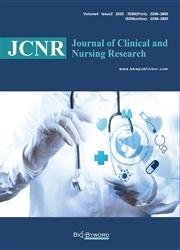The Efficacy and Safety of Dinoprostone Vaginal Insert for Labor Induction Following Optimization of Standard Operating Procedure: A Retrospective Study in China
引用次数: 0
Abstract
Background: The study aimed to assess the efficacy and safety of dinoprostone vaginal insert in labor induction following optimization of standard operating procedure (SOP) and to discover independent predictors of vaginal delivery. Methods: This study comprised 551 pregnant women who required cervical ripening with dinoprostone before induction of labor. Using univariate and multivariate analyses, independent predictors of vaginal delivery were identified. Results: 443 of the 551 women (80.4%) gave birth vaginally. Vaginal delivery was predicted by maternal age (24–30 vs. < 24, P < 0.001; 30–35 vs. < 24, P = 0.03), gestational age (P = 0.005), birth weight (P < 0.001), parity (P = 0.001), pre-pregnancy BMI (P < 0.001), premature rupture of membranes (P = 0.001), meconium-stained amniotic fluid (P < 0.001), fundal height (P < 0.001) and the Bishop score (P < 0.001). None of the women exhibited severe postpartum hemorrhage. Conclusions: The maternal age, gestational age, birth weight, parity, body mass index, premature membrane rupture, amniotic fluid contamination, fundal height, and the Bishop score were independent predictors of vaginal delivery. These may guide the clinical use of dinoprostone for induction of labor.优化标准操作程序后应用地诺前列酮阴道内固定片引产的疗效和安全性:中国的回顾性研究
背景:本研究旨在通过优化标准操作程序(SOP),评估迪诺前列斯通阴道插入物用于引产的有效性和安全性,并发现阴道分娩的独立预测因素。方法:本研究包括551名在引产前需要用迪诺前列酮使宫颈成熟的孕妇。通过单因素和多因素分析,确定了阴道分娩的独立预测因素。结果:551例产妇中443例(80.4%)为顺产。产妇年龄预测阴道分娩(24 - 30岁vs < 24岁,P < 0.001);30-35岁vs. < 24岁,P = 0.03)、胎龄(P = 0.005)、出生体重(P < 0.001)、胎次(P = 0.001)、孕前BMI (P < 0.001)、胎膜早破(P = 0.001)、胎粪染色羊水(P < 0.001)、胎底高度(P < 0.001)和Bishop评分(P < 0.001)。没有妇女表现出严重的产后出血。结论:产妇年龄、胎龄、出生体重、胎次、体质量指数、胎膜早破、羊水污染、足部高度、Bishop评分是阴道分娩的独立预测因素。这些可以指导迪诺前列酮引产的临床应用。
本文章由计算机程序翻译,如有差异,请以英文原文为准。
求助全文
约1分钟内获得全文
求助全文

 求助内容:
求助内容: 应助结果提醒方式:
应助结果提醒方式:


